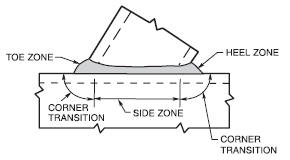Hi all,
Could anybody share experience when validating the welding strength of joints in steel frame what is the rule to choose the joint(s) to be validated? I was asked to validate welding joints with diheral angle lower than 30° in our steel frame which is composed of HSSs. I plan to extract the maximal loading of this kind joints in two suites of steel frame from global FEA, then validate the welding strength by hand calculation against the maximal loading. However, the joints of this kind may be more than 40 pieces in each suite.
I think it is tedious to extract loading of so many joints. Is there book, standard or rule which suggest how to choose the joint(s) to be validated? I have basic FEA capability and have learned the basic method to calculate stress in throat of weld which is mentioned in AISC Steel Construction Manual (SCM).
Any suggestion is appreciated. Thank you!
Could anybody share experience when validating the welding strength of joints in steel frame what is the rule to choose the joint(s) to be validated? I was asked to validate welding joints with diheral angle lower than 30° in our steel frame which is composed of HSSs. I plan to extract the maximal loading of this kind joints in two suites of steel frame from global FEA, then validate the welding strength by hand calculation against the maximal loading. However, the joints of this kind may be more than 40 pieces in each suite.
I think it is tedious to extract loading of so many joints. Is there book, standard or rule which suggest how to choose the joint(s) to be validated? I have basic FEA capability and have learned the basic method to calculate stress in throat of weld which is mentioned in AISC Steel Construction Manual (SCM).
Any suggestion is appreciated. Thank you!

